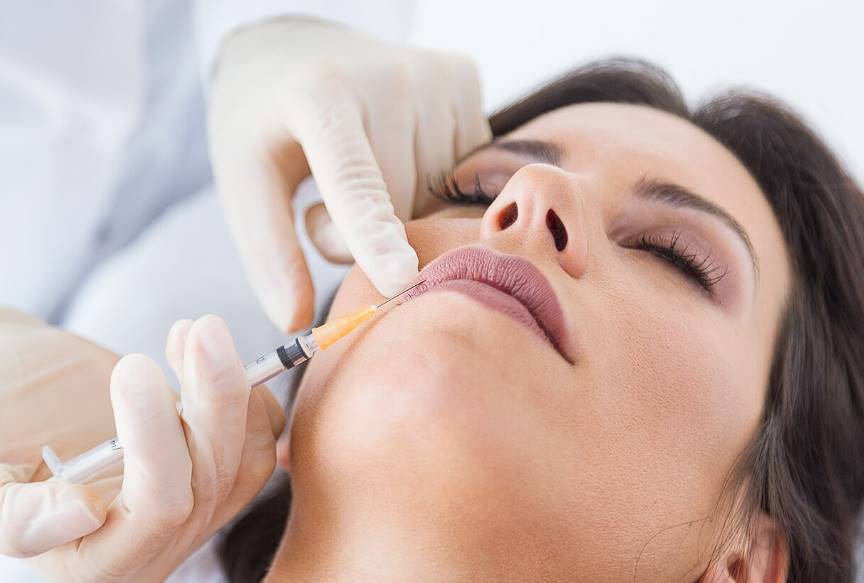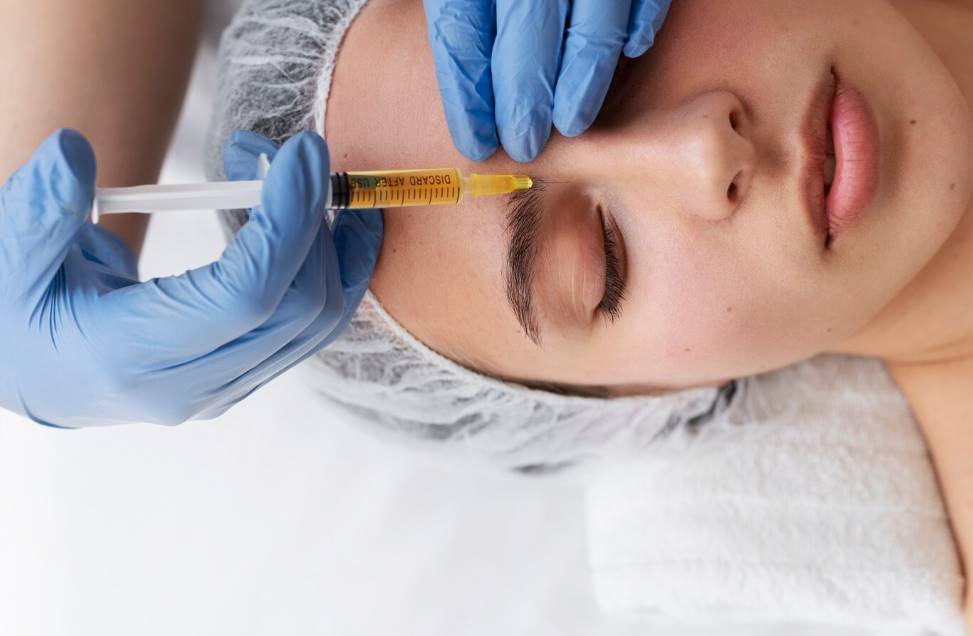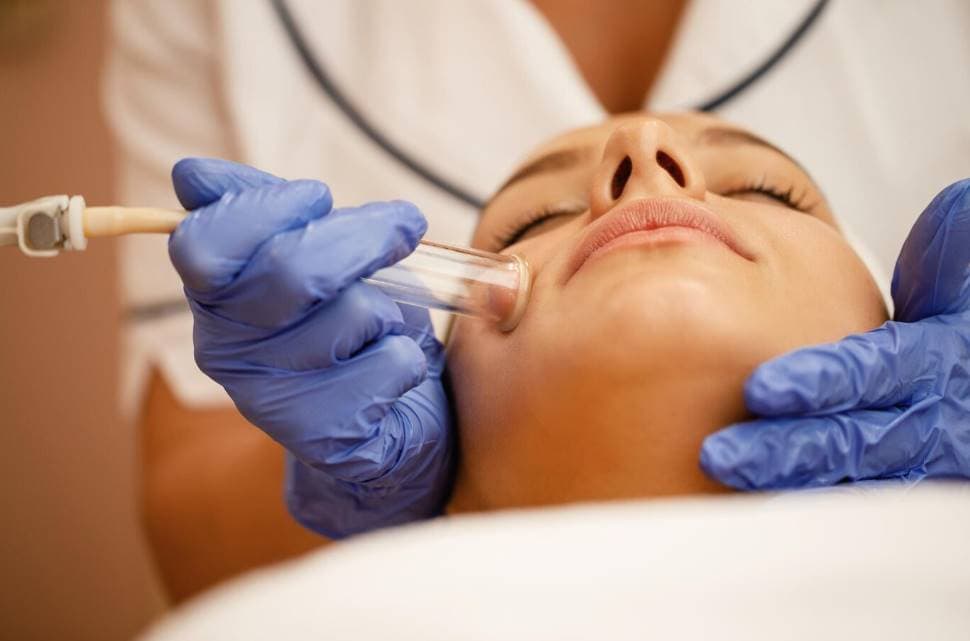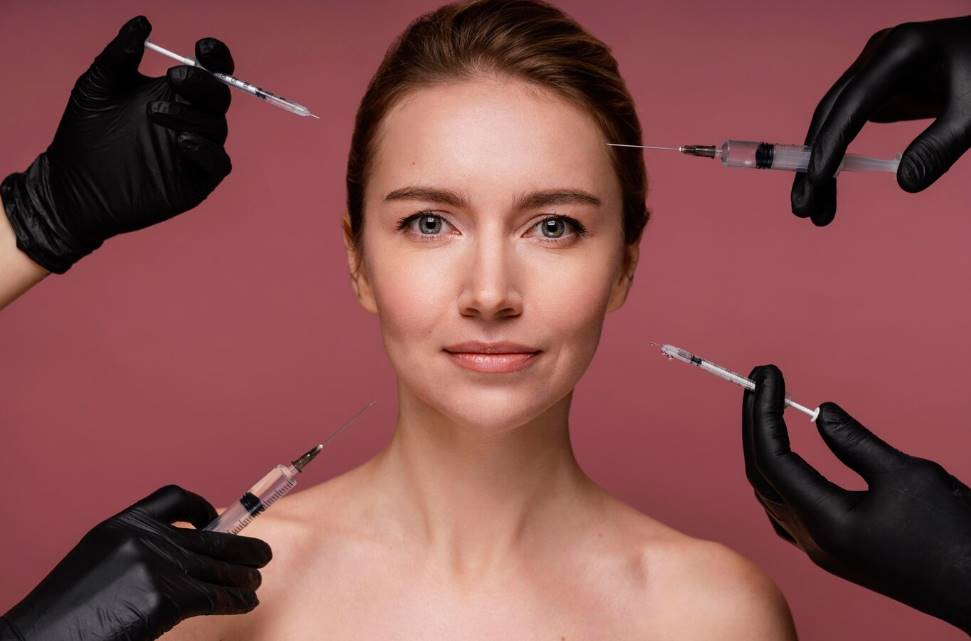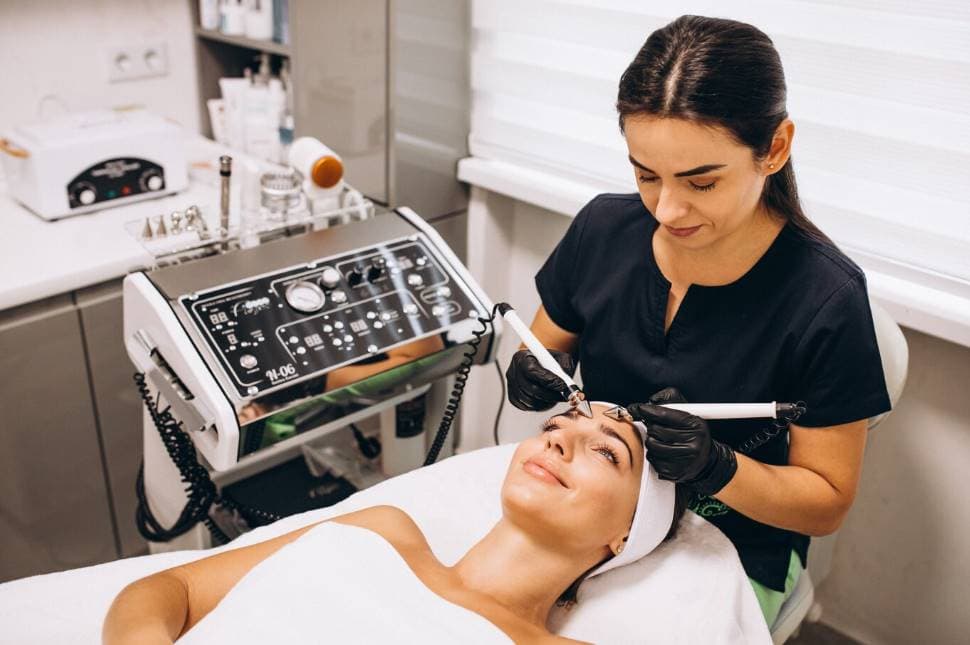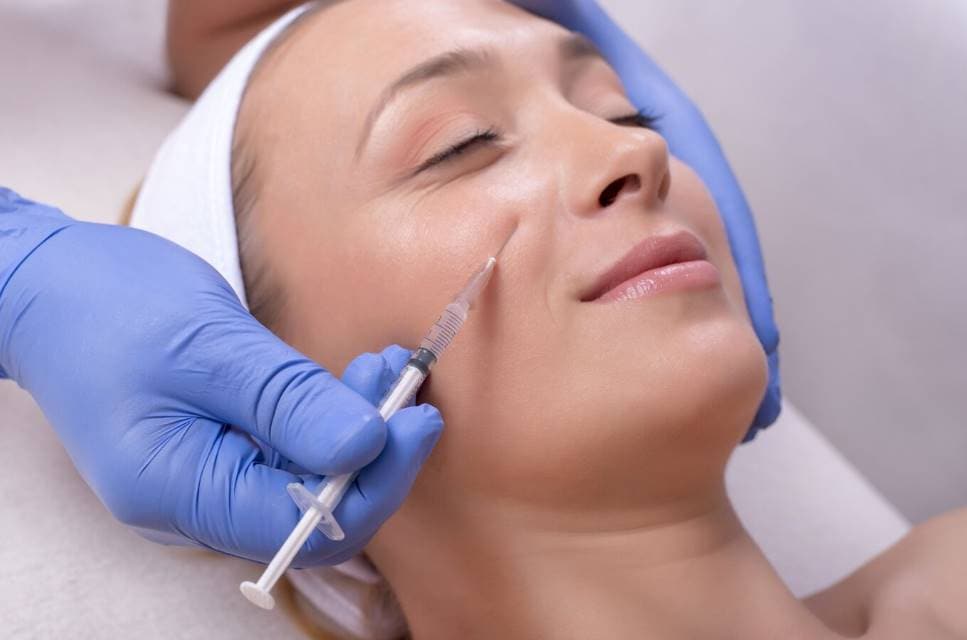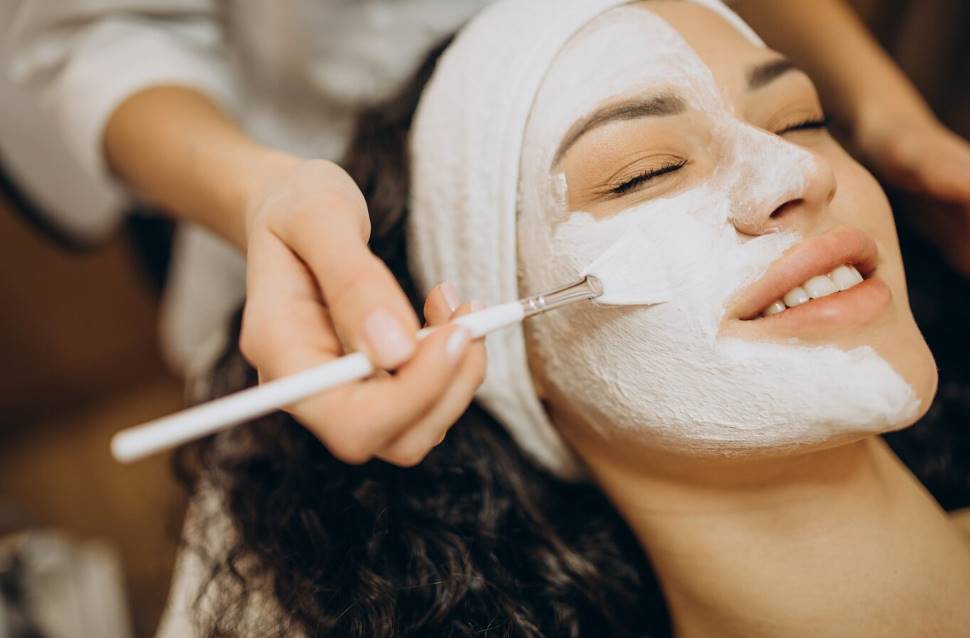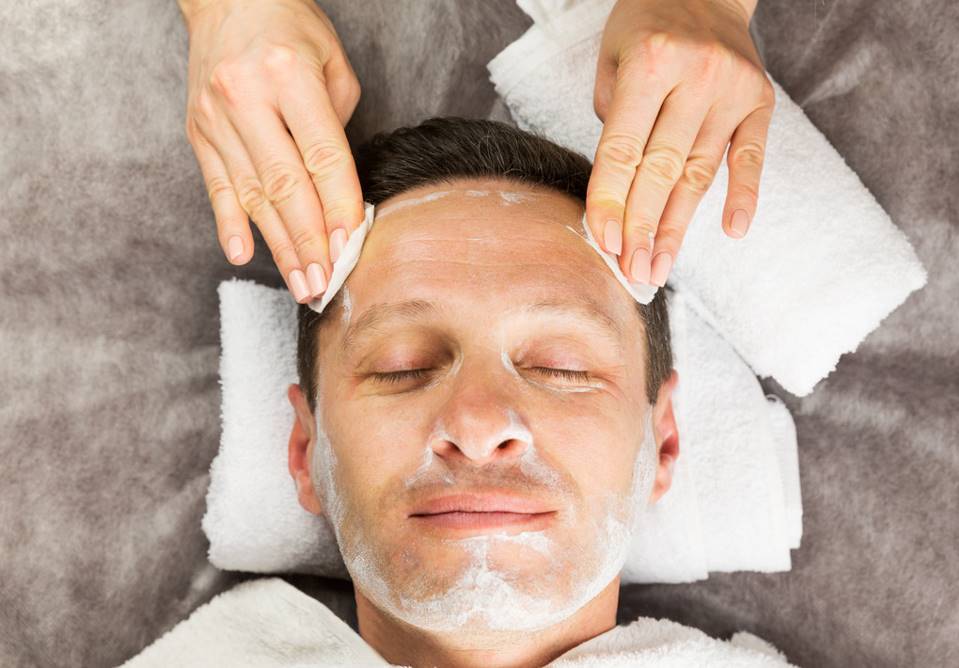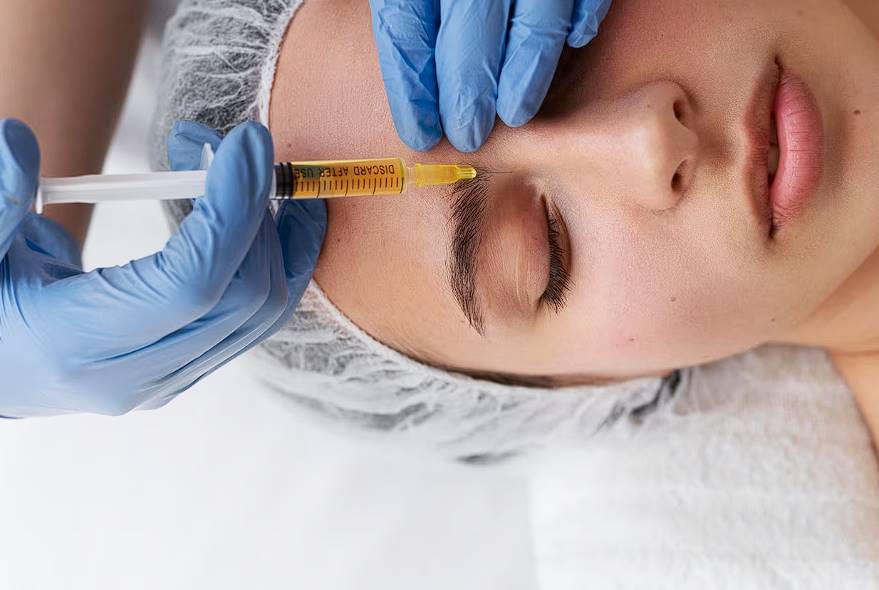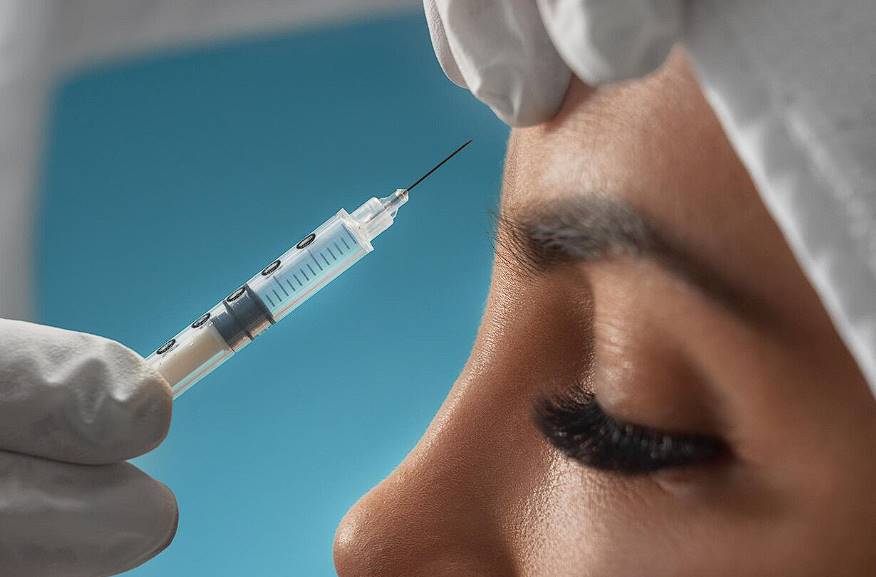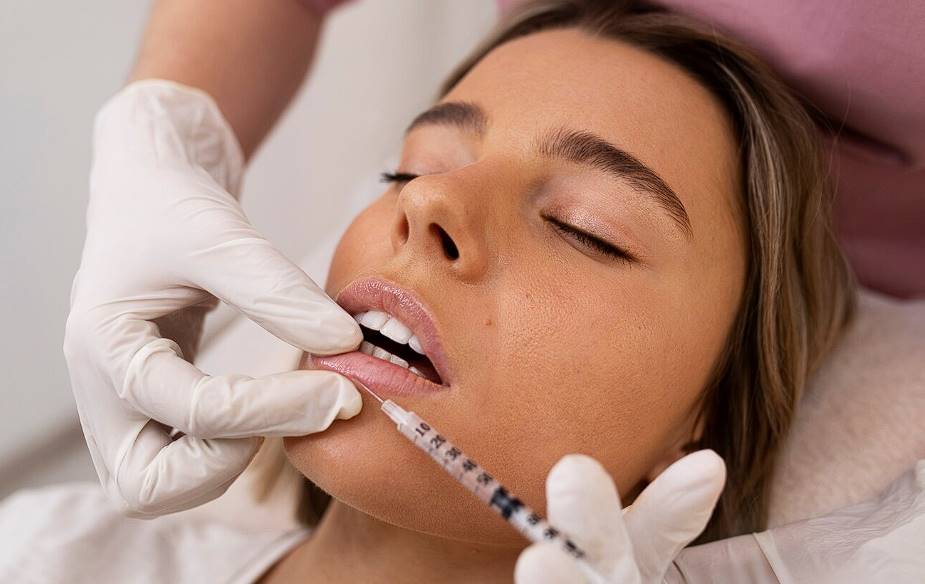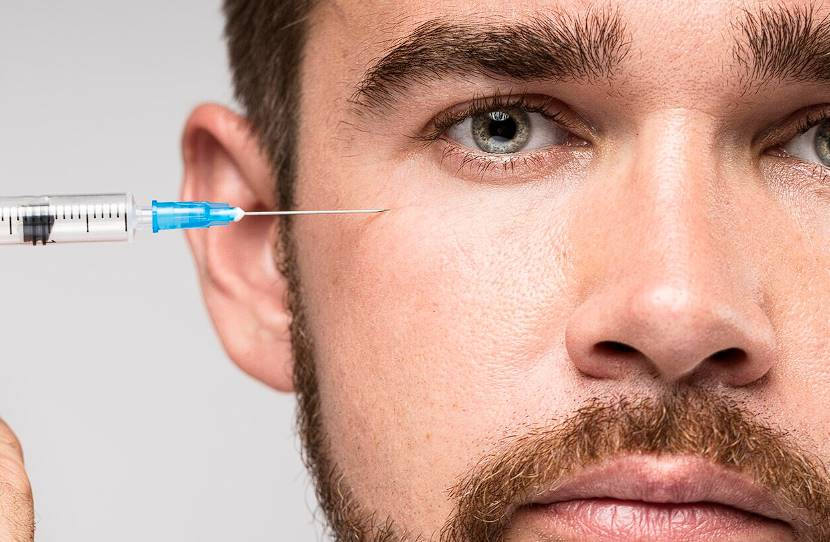Sometimes, it's hard to know which injectable treatment to get. You could have concerns about the product's security, potential adverse effects, and relative value. You may also be worried that this won't be reversible. Let's investigate dermal fillers and other injectable cosmetics in further detail.
Transferring fatty tissue from one body area to another via injection is not novel. To conceal a scar, a surgeon around the turn of the last century took fat from a patient's upper arm and reinjected it into the patient's face. Artificial substances were eventually produced to serve as substitutes for fatty tissue.
Fillers And Botox: What You Should Know
Botox and dermal fillers have similar outcomes in terms of diminishing the appearance of wrinkles and fine lines around the face. These injectable treatments provide excellent, permanent results with no recovery time because they are not surgical procedures.
However, different injectables have distinct effects on the body and serve different purposes. Your injector will suggest a treatment plan that is designed just for you.
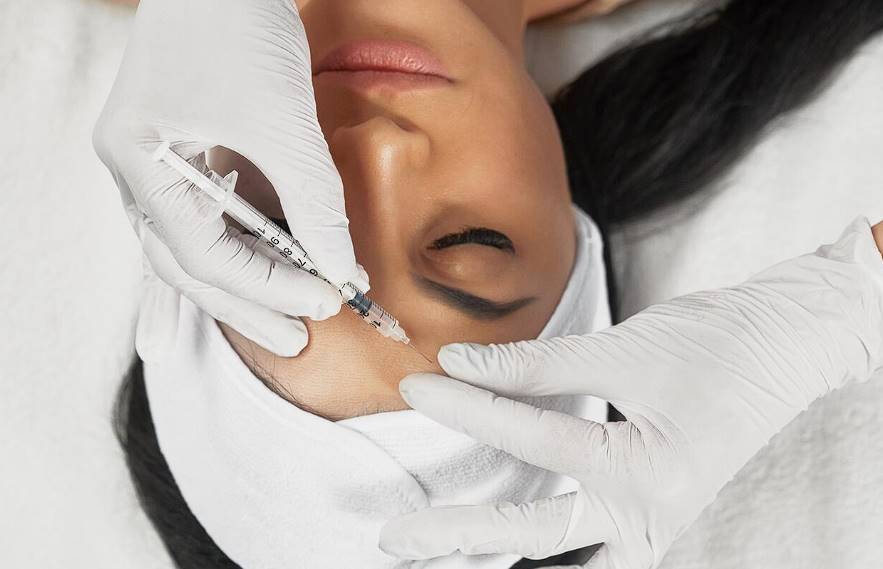
About Botox
Botox Cosmetic, a neurotoxin that smooths out wrinkles, relaxes muscles by temporarily paralysing them. Those wrinkles are more common in the areas surrounding the mouth and eyes.
After the doctor has loosened the facial muscles, the patient will have a more refreshed appearance. Botox is most commonly used as a wrinkle treatment but has numerous other applications. Botox's use to treat:
- Crow's feet
- Hyperhidrosis (excessive sweating)
- Forehead lines
- Frown lines
- Strabismus (an eye-alignment issue)
- Controlling muscle spasms
Is Botox Safe?
When used for cosmetic purposes, botulinum toxin does not cause any serious or permanent side effects. This means that there are no major risks associated with using Botox. Botox's long-term safety profile is excellent.
Mistakes To Avoid After Getting Botox
Dynamic lines and wrinkles (from smiling, frowning, and squinting) can be temporarily reduced with the help of Botox, a neurotoxin injected into the muscle.
After four months, the body will have completely metabolised the Botox. Although Botox is safe and effective, there are still several things you shouldn't do after getting the injections.
Avoid Engaging In Strenuous Cardio
While cardio might help you feel good and burn calories, it may not be the best choice if you want to get the most out of your Botox treatments. Because cardio induces a transient elevation in blood pressure, bruises and swelling at the injection site are more likely to occur.
Even if you're a fitness fanatic, it's best to rest your heart for a full day after receiving neurotoxic injections. Don't worry; in the long run, your persistence will speed up the arrival of the desired positive outcomes.
Don't Use Facial Tools Or Apply Makeup
Makeup application should be delayed for at least 30 minutes following Botox injections. If you apply cosmetics directly after getting a neurotoxin injection, the tiny puncture wounds left behind could be a breeding ground for bacteria. After about half an hour, the tiny puncture sites will start healing, allowing you to resume your regular makeup regimen.
It would help if you also postponed using facial equipment like jade rollers and Gua Sha stones since they might increase blood flow to the areas where they are applied, risking the occurrence of edema, bruising, or the migration of Botox beneath the skin.
Avoid Lying Down
After obtaining Botox, don't sleep for at least four hours. As a result, less bruising will occur, and the neurotoxic will be less likely to spread unintentionally. Similarly, on the first night after getting Botox, you shouldn't sleep on the side of your face opposite where the injections were made. Doing so will also help the Botox take effect in the desired manner within the muscles.
Avoid Alcoholic Beverages
Easily bruised? Since alcohol is a blood thinner, consuming it the day before or after your Botox treatment may increase the likelihood of bruising. Some people experience minor dizziness or drowsiness for a few hours following Botox injections, and drinking alcohol may exacerbate these side effects.
What Side Effects Might Botox Cause?
Injections of botulinum toxin for medicinal or cosmetic purposes are considered safe when performed by a qualified medical professional. However, they are not risk-free procedures. Botox treatments can cause a wide variety of unwanted effects and difficulties.
- The injection site is swollen and painful.
- The injection location may experience skin discolouration or superficial reddening.
- Headache
- Feverish signs
- Severe dry eyes or teary eyes
- Eyelid drooping or cocked eyebrows
- An uneven grin or salivation
It is quite unusual for the toxin to extend beyond the injection site. Suppose you have any of the following symptoms. In that case, you should immediately contact your doctor for medical help: blurred vision, difficulty breathing, muscle weakness, difficulty speaking, difficulty swallowing, or loss of bladder control. These reactions to Botox can start immediately or take many weeks to develop.
Pregnant and nursing women are not good candidates for Botox treatment. People who are allergic to the protein found in cow's milk should also avoid using it.
About Dermal Fillers
Injectable fillers are typically used to correct volume loss throughout the face, whereas Botox is utilised to smooth out tiny creases near the sensitive muscles of the face. Applying dermal fillers to the lips to alter their contours or add volume is another prevalent cosmetic procedure.
Dermal fillers can considerably improve the look of scar tissue resulting from burns, acne, or other traumas. Dermal fillers are injected subcutaneously in these situations to reduce the visibility of scars and restore a more even skin tone.
Skin elasticity decreases as we age because the body produces less collagen. The nasolabial folds (smile lines), the jawline, and other areas where volume loss has resulted in wrinkles can all be remedied using dermal fillers to make the skin look younger.
Various dermal filler products are on the market, each manufactured from a unique combination of ingredients. Even though there are more widely used dermal filler brands, only your surgeon can tell you which is best.
Hyaluronic Acid Fillers
Tears and other tissues contain a sugar molecule group called hyaluronic acid (HA). This chemical is essential in keeping the skin's moisture balance in check and aids in joint lubrication.
The FDA has approved the Juvederm series of hyaluronic acid fillers, which includes Voluma, Vollure, and Volbella. Marionette lines, lip lines, and lip augmentation are all procedures that work best on the "lower third" of the face.
Calcium Hydroxylapatite Filler
Calcium hydroxylapatite (CaHA) has been one of the most widely used and extensively researched cosmetic filler ingredients for about 20 years. When it comes to midface rejuvenation and volume restoration, many doctors consider this fully biodegradable gel to be the industry standard.
CaHA fillers, due to their special qualities, increase the skin's viscosity and elasticity, resulting in a "plump" that looks completely natural and is particularly effective around the temples and chin.
The substance is long-lasting but not permanent; it occurs naturally in human bones. CaHA is commonly used to treat deeper, more noticeable lines and wrinkles of the face, and its results are renowned for their natural appearance. This filler does not migrate and can last for a year or more.
Are Fillers Safe?
A polished appearance is a goal shared by all. You might have pondered dermal fillers to enhance your skin's appearance. Are dermal fillers, however, risk-free?
There is evidence that dermal fillers are safe for use. The research even lists them as one of the most sought-after minimally invasive treatments available today. More than 11 million dermal filler treatments were conducted in 2016. This shows that patients have confidence that dermal fillers will produce desirable effects.
Above the nose, in the tear troughs, and on the upper part of the forehead are all areas where dermal fillers might cause problems. Injecting into this location incorrectly can result in blindness due to the high concentration of blood vessels there. Because of this, finding a physician who is well-versed in and experienced with treating cardiovascular conditions is crucial.
What Risks Come With Using Dermal Fillers?
Whether or not to employ fillers is a deeply individual choice. It would help if you weighed the potential benefits of dermal fillers against the dangers and issues involved. Your plastic surgeon and staff will review the potential complications with you.
If you agree to proceed with the procedure, you must sign a consent form attesting to your knowledge of the potential dangers. Dermal fillers seldom cause serious side effects. The following are some potential dangers that may arise, depending on the filler used and its longevity:
- Skin breakouts resembling acne
- Asymmetry
- Bleeding at the injection site
- Bruising
- Lumps
- An itchy skin rash
- Swelling
- Skin injury leading to a cut and perhaps leaving scars
- Infection in the injection area
- Feeling the filler beneath the skin's surface
- Necrosis of the skin (ulceration or skin loss due to blood flow interruption)
- Redness on the skin
- Correcting wrinkles too much or too little
Rarely, the filler may be injected into a vein or artery instead of under the skin. Blood flow obstruction is possible. What happens when blood flow is restricted varies according to the location of the obstruction.
If your skin is impacted, there is a risk of skin damage or loss. If your eye is impacted, you risk vision loss or even total blindness. These and other potential downsides will be laid out in detail before you give your approval.
Things To Avoid Following Dermal Fillers
Static wrinkles, such as nasolabial folds and vertical lip lines, can be "filled in" with dermal fillers. In addition to restoring lost volume, fillers can stimulate collagen formation and soothe and revitalise dry, drab skin. Even though dermal fillers are very safe, there are several things you shouldn't do after getting a treatment.
Avoid Getting A Massage, Facial, Or Dermaplaning
Dermal fillers occasionally migrate deep beneath the skin if subjected to constant and sufficient pressure. We tell patients that during the first two weeks after getting filler injections, they shouldn't get facials, massages (on the treated skin), or dermaplaning.
Also, avoid rubbing the area around your injection sites the first day after getting dermal fillers since this can irritate the skin and lead to or exacerbate bruising and swelling. Do not massage your fillers unless directed to do so by your plastic surgeon or injector, even though massage can sometimes help milder symptoms like lumpiness or small asymmetry.
Wearing Goggles Or Other Eyewear That Applies Pressure On Treated Areas Is Not Advised
Avoid wearing goggles or eyewear for a few days after getting fillers injected into the upper portion of your face. Similar to the effects of massage, the pressure of some eyewear styles may encourage filler to move deeper into the skin. For the first week after receiving nasal filler injections ("liquid rhinoplasty"), we recommend that our patients not wear eyeglasses to provide the best possible results.
Sunbathing
Wait at least 24 hours after obtaining dermal fillers before sunbathing in the sun or utilising a tanning bed. Redness, bruising, and swelling around your fillers may appear if you expose your treated skin to direct UV rays. Wear high-SPF sunscreen and protective clothes if you must be in the sun for an extended period.
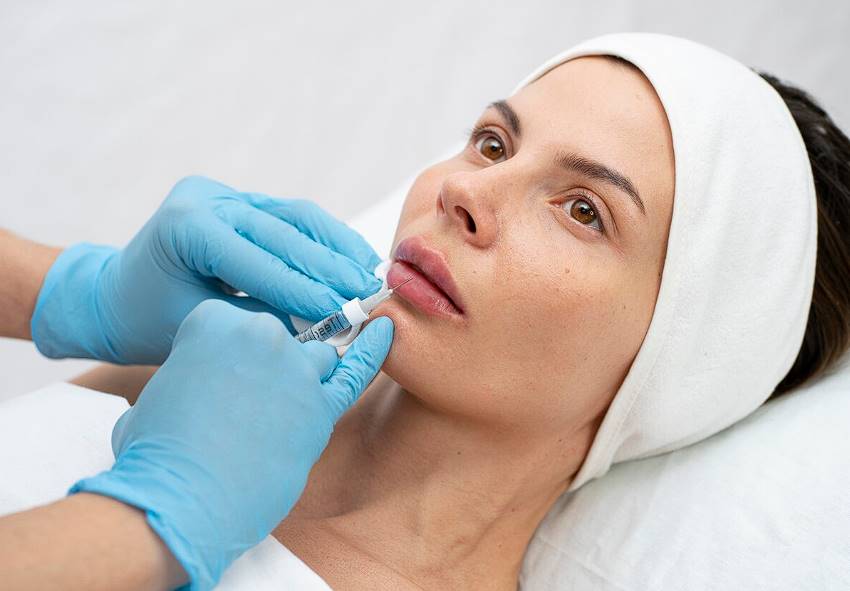
What Happens If My Aesthetic Injections Don't Satisfy Me?
Correcting Botox.
If you're unhappy with the results of Botox, your cosmetic surgeon can help you achieve a more natural look by injecting the neurotoxin into different parts of your face. The body largely absorbs Botox after roughly four months, so you should expect diminishing results afterwards.
Correcting Fillers.
If you are unhappy with the results, your surgeon can inject hyaluronidase to dissolve dermal fillers made from hyaluronic acids, such as Juvéderm and Restylane.
Can I Have Botox And Dermal Fillers Together?
Combining Botox and fillers can produce wonderful outcomes. It's up to your plastic surgeon whether they inject Botox first to relax your muscles, then the filler, or vice versa. Botox and dermal fillers are utilised to treat different kinds of wrinkles and give different benefits, contributing to their combined efficacy.
Conclusion
Botox and dermal fillers are products that are injected into the skin. They can be used to make wrinkles and fine lines around the face look less noticeable. They give great, permanent effects without any downtime because they aren't surgeries. But each shot has a different effect on the body and is used for a different reason.
Botox Cosmetic is a neurotoxin that briefly makes muscles weak, which smooths out wrinkles and relaxes them. It is most often used to treat wrinkles, but it can also be used to treat crooked feet, excessive sweating, forehead lines, brown lines, strabismus, and muscle cramps.
Botox treatments can have a number of side effects and problems, such as painful and swollen injection sites, discoloured skin, headaches, signs of a fever, serious dry eyes, watery eyes, eyelid drooping, an uneven smile, and salivation. Botox is not a good choice for women who are pregnant or nursing, and people who are allergic to cow's milk protein should also avoid it.
Hyaluronic acid (HA) is a sugar molecule that can be found in tears and tissues. It helps the skin keep the right amount of wetness and keeps joints from getting too dry. The Juvederm series of hyaluronic acid fillers, which are used for mariette lines, lip lines, and lip augmentation, have been cleared by the FDA. Calcium Hydroxylapatite (CaHA) fillers are often used to restore volume and refresh the midface. This gives the temples and chin a fuller look that looks natural.
Dermal fillers are safe to use, and in 2016, more than 11 million treatments were done. But they can cause problems above the nose, in the tear pits, and on the top of the forehead, where there are a lot of blood vessels. This can lead to blindness because the blood vessels are so close together. For a good injection, you need a doctor who has experience treating heart problems.
Some possible risks include skin breakouts, imbalance, bleeding at the injection site, bruising, lumps, itchy skin rash, swelling, skin injury, infection, feeling the filler under the skin's surface, necrosis, redness, and wrong wrinkle correction. Blood flow can also be blocked, which can cause damage to or loss of skin, vision loss, or even total blindness.
After getting dermal fillers, people shouldn't get haircuts, massages, or dermaplaning because the fillers could move deeper under the skin. Also, they shouldn't wear goggles or other headgear that puts pressure on the treated areas. After getting facial fillers, you shouldn't go out in the sun for at least 24 hours.
If patients aren't happy with aesthetic treatments, they can either fix Botox or use hyaluronidase to get rid of hyaluronic acid-based dermal fillers. Depending on how the surgeon does it, combining Botox and facial fillers can lead to great results.
Content Summary
- Many consider Botox and fillers to achieve a youthful look.
- Safety concerns often arise regarding these treatments.
- The history of fillers dates back to using fat as scar concealers.
- Botox and fillers provide non-surgical solutions for wrinkles.
- Different injectables serve distinct aesthetic purposes.
- Botox relaxes muscles, reducing the appearance of wrinkles.
- Common uses of Botox include treating crow's feet and forehead lines.
- Botox is effective for frown lines and excessive sweating.
- Botox's safety profile is well-established for cosmetic purposes.
- Post-botox care includes avoiding strenuous cardio to prevent bruising.
- After Botox, delay makeup application to avoid infections.
- Post-treatment, lying down should be avoided for optimal results.
- Consuming alcohol post-Botox might enhance bruising risks.
- Side effects of Botox include swelling, headaches, and drooping eyelids.
- Severe reactions to Botox are rare but demand immediate medical attention.
- Dermal fillers correct facial volume loss and enhance lip contours.
- Fillers can treat scars resulting from acne or burns.
- Hyaluronic Acid (HA) fillers are popular for their moisture-balancing properties.
- Calcium Hydroxylapatite fillers offer natural-looking results.
- Dermal fillers have proven safety records, with millions of treatments annually.
- Dermal filler risks include skin breakouts, lumps, and uneven treatment.
- Incorrect filler placement could lead to skin necrosis or vision loss.
- After dermal fillers, avoid massages to prevent filler migration.
- Avoiding sun exposure post-filler treatment minimises side effects.
- Unhappy with Botox? Effects diminish naturally after about four months.
- Dissatisfaction with fillers can be addressed with hyaluronidase injections.
- Combining Botox and fillers offers comprehensive facial rejuvenation.
- Fillers focus on static wrinkles while Botox targets dynamic lines.
- Botox offers a refreshed appearance by relaxing facial muscles.
- Dermal fillers work best on areas with volume loss like the nasolabial folds.
- Extensive research supports Calcium Hydroxylapatite fillers for midface rejuvenation.
- Post-filler, avoid pressure on treated areas for best results.
- Botox treatments can help with medical conditions like muscle spasms.
- After Botox, the body typically metabolises the neurotoxin in four months.
- Fillers add volume, while Botox smoothens wrinkles.
- Fillers' versatility extends to scar treatment and lip augmentation.
- If Botox results aren't satisfactory, adjustments can be made.
- Dermal fillers vary, and your surgeon will suggest the most suitable one.
- Hyaluronic Acid fillers include popular brands like Juvederm.
- The safety of injectable treatments relies heavily on a qualified professional.
- Drinking post-treatment may exacerbate dizziness from Botox.
- Eyeglasses can impact results after nasal filler treatments.
- UV rays can affect the healing process after dermal fillers.
- Botox results are temporary, typically lasting a few months.
- Dermal fillers tackle deeper wrinkles, giving natural results.
- Incorrectly placed dermal fillers might lead to complications.
- Dermal fillers are among the top minimally invasive treatments today.
- Both Botox and fillers contribute to a refined aesthetic appearance.
- For Botox, common concerns include pain at the injection site and feverish symptoms.
- Before any treatment, understanding potential risks is crucial.
Frequently Asked Questions
Botox injections are usually safe when you're under the care of a licensed and skilled healthcare provider. The procedure can result in unwanted results or even cause harm if it's given incorrectly. Possible side effects and unwanted results include Pain, swelling or bruising at the injection site.
Certain types, like Radiesse, can also help create collagen in the face, neck and body. Remember, the filler is considered much more dangerous than Botulinum Toxin injections because the gel-like substance is more like an implant (usually lasting around a year) and can also occlude vessels.
You may experience redness, bruising, bleeding or swelling. More serious complications include allergic reactions, shortness of breath and headache or flu-like symptoms. However, these side effects can be limited or prevented if a skilled professional does your treatment with anatomical knowledge.
If you stop BOTOX treatments after many years of regular injections, the only effect will be that your wrinkles will return, albeit a bit more slowly than if you had not been using BOTOX.
Dermal fillers may not be appropriate for people with certain conditions, such as bleeding disorders or some allergies. If your healthcare provider confirms that dermal fillers are an option, know that all medical products have benefits and risks.
